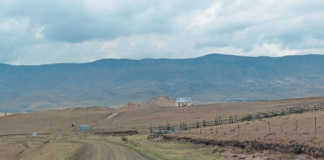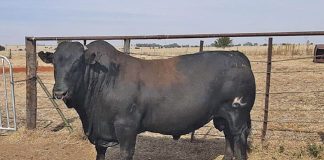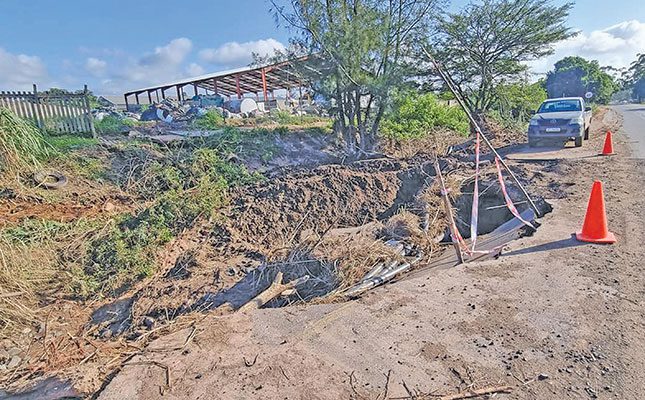
Photo: Jyothi Laldas
- KwaZulu-Natal’s farming community has been hit with a barrage of challenges since the onset of the COVID-19 pandemic.
These began with pandemic-related restrictions in 2020, were followed by the anarchy and destruction of the unrest and rioting in 2021, and were succeeded in turn by the April 2022 floods.
The floods have been described as the most catastrophic natural disaster yet recorded in KwaZulu-Natal (KZN) in terms of lives lost, homes and infrastructure damaged or destroyed, and economic impact, according to a study by researchers from the University of the Witwatersrand (Wits) in Johannesburg and the University of Brighton, UK, published in the South African Geographical Journal.
On 11 April 2022, the KZN coastal zone, including the greater Durban area and South Coast, received more than 300mm of rain in 24 hours, which led to calamitous flooding and 459 people losing their lives.
Over 4 000 homes were destroyed, 40 000 people left homeless, and 45 000 people left temporarily unemployed. The cost of infrastructure and business losses amounted to an estimated R37 billion.
All parts of the province were affected by the rainfall, with the entire eThekwini metro and the districts of iLembe, Ugu, King Cetshwayo and uMgungundlovu being most affected.
Many of these areas are farmland, predominantly sugar cane fields, and these were all but destroyed during the flooding.
The impact of the floods saw President Cyril Ramaphosa declare a national state of disaster to deal actively with the fallout.
Severity
Prof Stefan Grab from Wits University and his colleague from the University of Brighton,
Prof David Nash, constructed a geographical history of flooding disasters in KZN, sifting through thousands of archived articles in old newspapers, colonial and government records, early missionary records, and meteorological records that became available from the 1850s onwards.
They defined extreme flooding events, where major rivers were overflowing their banks, together with one or more significant consequences, such as the loss of human life, livestock, agricultural fields and crops, and infrastructure damage to buildings, roads and bridges.
The study, which reconstructed the history of floods in KZN since the 1840s, confirmed a widely held, yet anecdotal, view that the April 2022 floods were probably the most catastrophic natural disaster yet recorded in the province. Moreover, the number of floods had doubled over the past century or so.
“Right after the floods, many commentators like the media, some scientists and others were quick to report that the floods were the most severe ever recorded. Our aim was to place the floods into perspective and see if this and other statements related to the disaster were factually correct by building a historic geographic account of past floods and associated extreme rainfall events for KZN and particularly the greater Durban region,” said Grab, lead author of the study.
“With regard to flood disasters, history is repeating itself. We need to prepare for bigger rainfall events in our cities, and that doesn’t just apply to Durban, but to all South African cities and towns. We must get our infrastructure, especially drainage systems, in order. It is urgent that we better prepare ourselves for the heavy rainfall and flood events that are guaranteed to come in times ahead.”
Cane growers devastated
A survey conducted by the South African Cane Growers’ Association (SA Canegrowers) revealed that cane growers in rural areas of KZN sustained extensive damage not only to cane fields and farm infrastructure, but also to access routes that allowed growers to deliver their cane to mills.
Just over 300 growers reported that about 2 500ha of cane had suffered extensive crop and root damage, requiring the total replanting of these fields to bring them back into production. This damage amounted to an estimated R195 million.
Farm infrastructure to the value of around R28 million had also been destroyed, bringing total losses to R223 million, while a number of roads and bridges had been washed away.
These included not only the main transport nodes to mills, but also access routes for farm inputs and workers.
“This catastrophic damage came just as many cane growers started to recover from the riots and arson attacks that took place in July 2021, which saw 554 000t of cane being burnt and R84 million in losses,” Thomas Funke, CEO of SA Canegrowers, says.
He added that the floods could have been the final death knell for hundreds of cane growers and the rural livelihoods they supported, in particular small-scale growers, who were most at risk of not recovering from losses of this magnitude.
SA Canegrowers remained committed to working closely with government to ensure that critical relief was provided to growers affected by the recent catastrophic events, Funke says.
“With our industry continuing to face a number of challenges, including the influx of cheap imports and the health promotion levy, we need to do all we can to assist these growers to rebuild so they can continue to support the workers and communities who depend on them,” he says.
Farmers’ battle continues
A year later, many farmers are still struggling to emerge from the despair created by the flooding.
Nkosingiphile Nhlenyama is a small-scale cane grower near the Jozini Dam in the uMkhanyakude District in northern KZN. He farms a total of about 6ha and sustained damage to 2,5ha of sugar cane.
“I’m still waiting for help. I’m a small-scale farmer and I don’t have the funds to clear the damaged cane and replant. The government was supposed to help us, but many of us are still waiting.”
He says that due to his farm being on the banks of the dam, the cane had been severely damaged, which meant that he lost seven truckloads of cane during the last harvest.
“The cane was growing so well and the rain was good. My cane was ready to be harvested, but even before we could get to it, the floods came and we lost it all. All the cane dropped to the ground.”
Nhlenyama says the land had remained waterlogged for a long time and he needed to hire a cane loader to remove the damaged cane, plough the land and replant. He was unable to afford this, however. “This requires a lot of money, and because of the losses I’ve sustained and continue to sustain, I can’t afford to clear the land right now.”
He adds that he did not have a contingency plan to guard against future disasters of this nature, because of where the farmland was situated.
“We know the risk, but because of where we are on the banks of the dam, there’s always a chance of flooding. But because we’re small-scale and use the dam for irrigation, we have few options. We’ll just have to deal with what comes when it comes,” Nhlenyama says.
Khetha Halala Biyela, from the Obuka Reserve in the Edebe area in Mthonjaneni Municipality, is a chicken and vegetable farmer who has also faced adversity due to the floods.
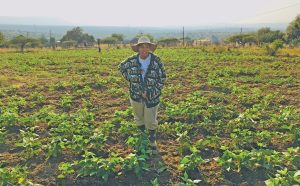
AZOWEL PROJECTS
“I developed a love for farming at a young age, but due to financial constraints I was
unable to start farming and only got going in 2021. I’m currently producing vegetables on my homestead on a 1ha plot. Right now I’m harvesting sugar beans and I also have 1 200 growing cabbages and spinach. I’m expanding my farm with a 3ha plot, but now the problem is that I don’t have fencing.”
Due to the floods, she, too, is short of money. “The floods, followed by the excessively wet weather conditions, have affected my production negatively. Abnormally high amounts of rain leach nutrients from the soil and so the soil fertility has become vulnerable.”
She says that to mitigate further disaster, she had used clean planting material to ensure low environmental impact in the event of more floods.
“I’ve also committed to building strong storage systems and setting boundaries to protect my plants. Drainage boundaries are one of the main efforts I’d like to employ. However, I don’t have funding to do much more right now.”
She works with hand tools such as shovels and hoes, which is time-consuming and inefficient, but she hopes for assistance in the future.
Rising from adversity
On the KZN North Coast, 32-year-old single mother Welile Gumede, who owns Azowel Projects in Ashville, Madundube, in KwaDukuza, was also badly affected by the floods.
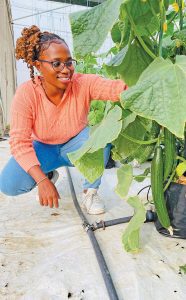
AZOWEL PROJECTS
Gumede, who was dependent on her daughter’s child support grant to survive, decided to take the plunge and use the grant money to farm with one tunnel in 2018.
Through hard work and determination, her initiative flourished and she ended up with 40 hydroponic tunnels producing tomatoes, leafy greens and peppers that she supplied to resellers all along the North Coast.
She was able to provide employment to 32 people and made an annual turnover of R1,6 million.
However, she was dealt a devastating blow when flood water battered the North Coast and she was forced to watch helplessly as her hard work was washed away. She was subsequently forced to stop operations on one of her farms.
While Gumede was in the process of rebuilding, albeit at a slower than desired pace, her plight came to the ears of Deputy Minister of Social Development Hendrietta Bogopane-Zulu during the latter’s visits to provide relief to families affected by the floods.
In response, the deputy minister, in partnership with MTN SA Foundation, reached out to Azowel Projects with a R1 million donation, half of which was sponsored by MTN.
Gumede has since moved to a better area in the iLembe region, where she has resumed operations growing cucumbers, peppers and tomatoes with 13 active tunnels, and is well on her way to recovery.
She says that with tunnel farming, crops are protected to an extent, so she hopes the move to a more favourable area would help in the event of further heavy rains.
For more info, visit azowelprojects.wordpress.com










